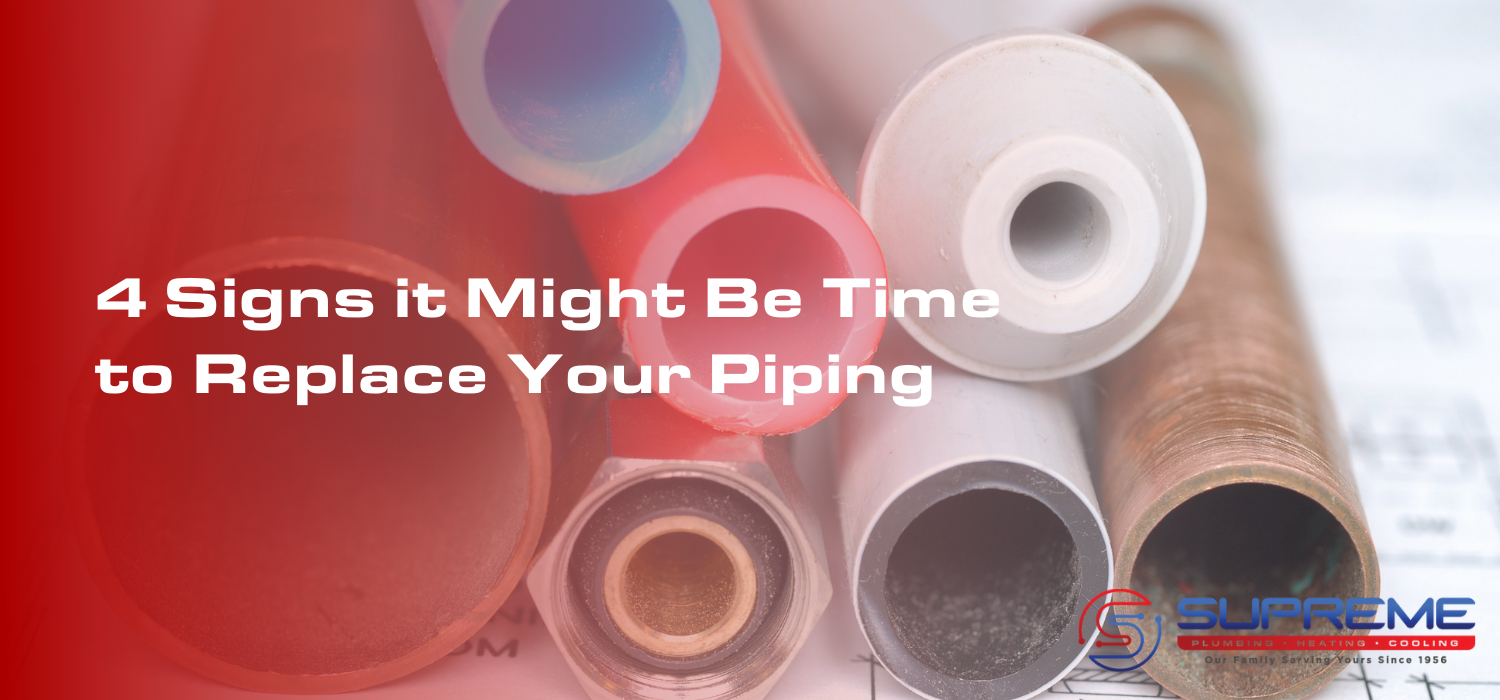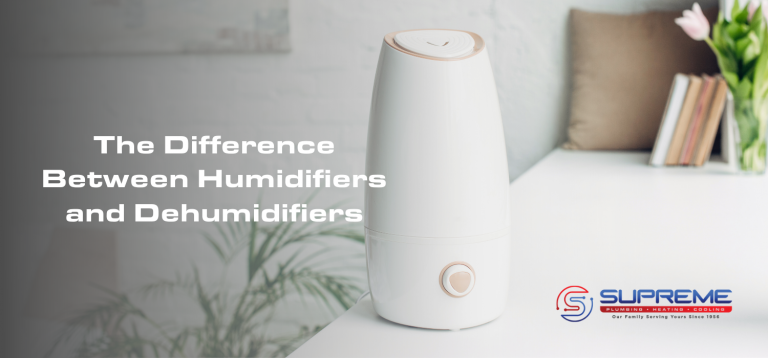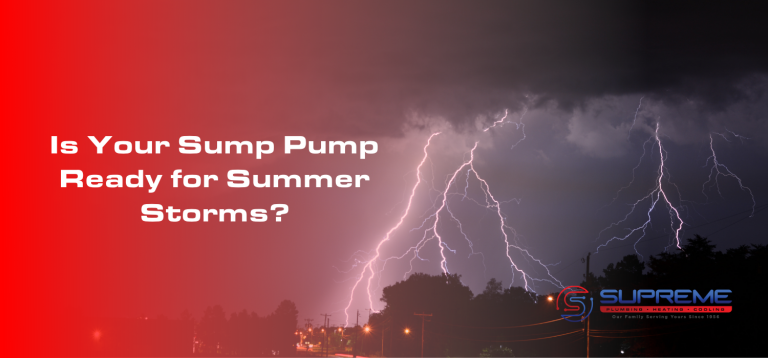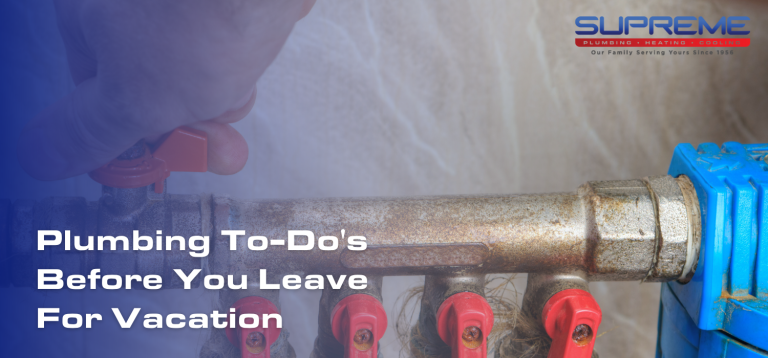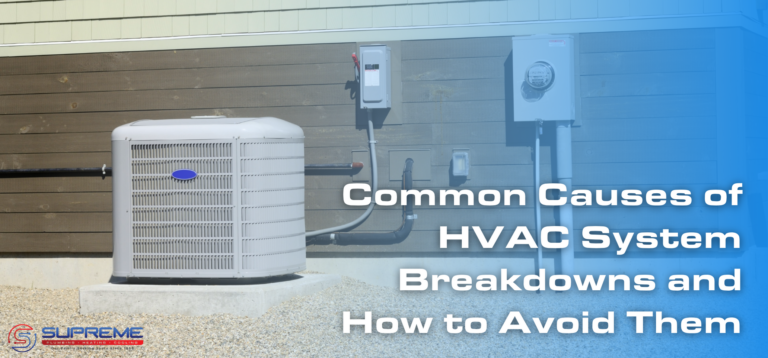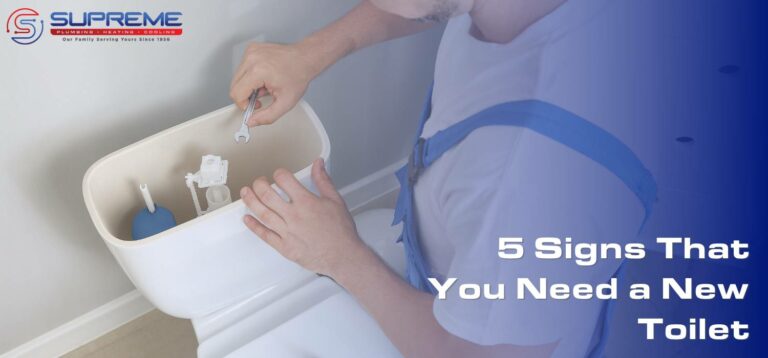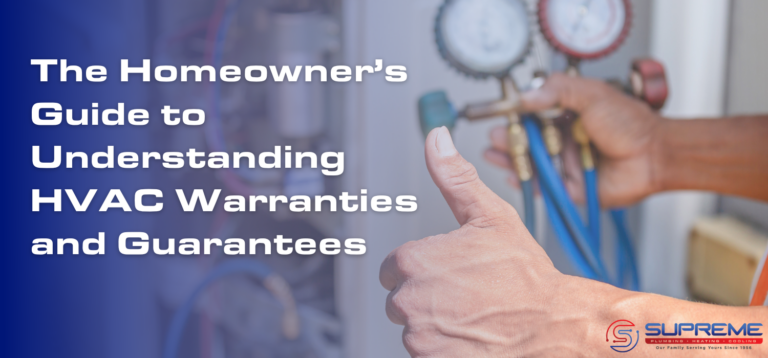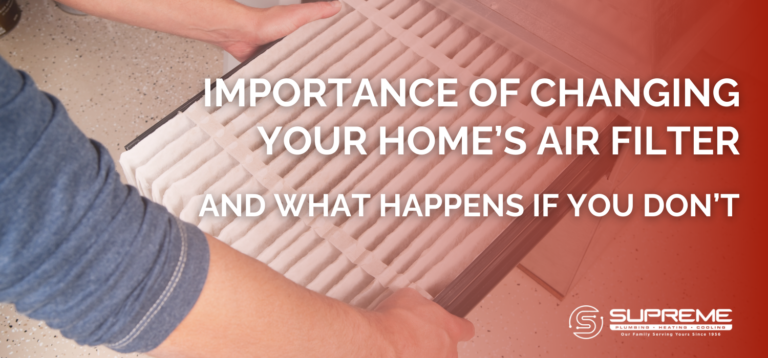You need a team of repipe specialists when it comes to the type of pipes in your home.
When your pipes work properly, the type of pipes you have and their condition are probably the last things on your mind.
However, it’s important to know when your pipes aren’t working properly. Below are some of the most common piping problems we see on a daily basis:
- Frequent leaks and clogs
- If you have discolored water, it may indicate rusty pipes
- Any sudden change in how your tap water tastes might be from rust and mold
- Low or inconsistent water pressure
Repiping your home is a costly project, with the average cost being between $4,000 to $15,000 depending on the problem’s severity. Since there are a variety of pipes with both pros and cons, you need to find the right pipes to replace your current ones.
At Supreme PHC, we’re the repipe specialists. That’s why we outlined each type of pipe typically found in homes, their pros and cons, and their common usages.
Experiencing pipe problems in your home? Give our team a call today.
PVC (Polyvinyl Chloride Pipes)
PVC pipes are commonly used as a part of a sink, toilet, or shower drain line. Unless they’re subject to some kind of damage, these pipes last indefinitely.
Pros
- Plastic tubing is ideal, as it protects the water from rust and corrosion
- Because of this, PVC pipes are incredibly durable
- They’re also able to handle high water pressure
Cons
- PVC pipes are limited in size options
- PVC pipes are unable to withstand hot water
- While they meet all standards set by the American National Standards Institute (ANSI), there are concerns that PVC pipes may introduce polyvinyl chloride chemicals into drinking water
Experiencing pipe problems in your home? Give our team a call today.
Cross-Linked Polyethylene (PEX)
Similar to PVC pipes, PEX pipes are affordable plastic tubing commonly used for water supply lines and prevents rust or corrosion from getting into the water. These pipes typically last for 25 to 40 years.
Pros
- PEX pipes are flexible and easy to weave through walls, ceilings, basements, and crawl spaces
- They’re strong enough to withstand the pressures of water supply
- Additionally, they’re color-coded for hot and cold water
Cons
- However, you can’t use PEX pipes outdoors in freezing temperature climates
- Additionally, rodents tend to chew through and live in plastic pipes
Acrylonitrile Butadiene Styrene (ABS)
ABS pipes are used for vent and drain lines and last from 50 to 80 years.
Pros
- ABS pipes are resilient to cold temperatures
- They’re easy to install
Cons
- ABS pipes can warm in direct sunlight
- They’re also noisier than other types of plumbing pipes
Experiencing pipe problems in your home? Give our team a call today.
Copper Pipes
Commonly found in sinks, showers, and tubs, copper pipes can last for up to 50 years.
Pros
- Copper pipes are corrosion-resistant and are best suited to protect the quality of water
- They’re able to handle high water pressure, and can tolerate both hot and cold water
- Copper pipes are also recyclable, making them one of the only environmentally friendly pipes in a house.
Cons
- Since copper pipes are so rigid, plumbers can’t use copper piping in tight spaces
- They are the most expensive type of plumbing pipe
Experiencing pipe problems in your home? Give our team a call today.
Cast Iron and Galvanized Steel Pipes
Cast iron and galvanized pipes are typically used as sewer pipes or other drainage purposes. Typically, they last anywhere from 80 to 100 years.
Pros
- Cast iron and galvanized steel pipes are heat-resistant
- Additionally, they reduce the sound of moving water
Cons
- These pipes are especially prone to rust and corrosion
- They’re usually replaced by copper or PEX pipes
- They’re also rarely included in new construction, and are typically found in houses built in the 20th century
Leave It to the Repipe Specialists: Repipe Your Home Today!
Pipes keep everything flowing in your home – literally. This is why you need to repipe your home immediately when the time comes with Supreme PHC, the repipe specialists in Indiana.
Experiencing pipe problems in your home? Give our team a call today.

